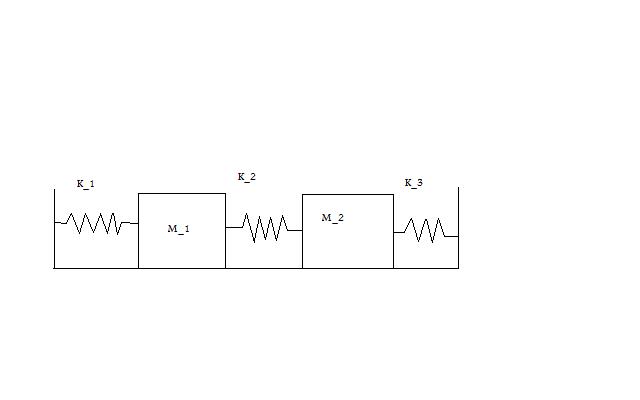|
|
| Line 154: |
Line 154: |
|
:<math>\lambda_3=\,</math> |
|
:<math>\lambda_3=\,</math> |
|
:<math>\lambda_4=\,</math> |
|
:<math>\lambda_4=\,</math> |
|
|
== Eigen Vectors == |
|
|
Using the equation above and the same given conditions we can plug everything to a calculator or computer program like MATLAB and get the eigen vectors which we will denote as <math>k_1,k_2,k_3,k_4\,</math>. |
|
|
:<math>k_1=\begin{bmatrix} |
|
|
0 \\ |
|
|
0 \\ |
|
|
0 \\ |
|
|
0 |
|
|
\end{bmatrix}</math> |
|
|
|
|
|
:<math>k_2=\begin{bmatrix} |
|
|
0 \\ |
|
|
0 \\ |
|
|
0 \\ |
|
|
0 |
|
|
\end{bmatrix}</math> |
|
|
|
|
|
:<math>k_3=\begin{bmatrix} |
|
|
0 \\ |
|
|
0 \\ |
|
|
0 \\ |
|
|
0 |
|
|
\end{bmatrix}</math> |
|
|
|
|
|
:<math>k_4=\begin{bmatrix} |
|
|
0 \\ |
|
|
0 \\ |
|
|
0 \\ |
|
|
0 |
|
|
\end{bmatrix}</math> |
Revision as of 13:57, 10 December 2009
Problem Statement
Write up on the Wiki a solution of a coupled oscillator problem like the coupled pendulum. Use State Space methods. Describe the eigenmodes and eigenvectors of the system.

Initial Conditions:





Equations for M_1

Equations for M_2

Additional Equations


State Equations
 =
=

With the numbers...
 =
=

Eigen Values
Once you have your equations of equilibrium in matrix form you can plug them into a calculator or a computer program that will give you the eigen values automatically. This saves you a lot of hand work. Here's what you should come up with for this particular problem given these initial conditions.
- Given




We now have

From this we get




Eigen Vectors
Using the equation above and the same given conditions we can plug everything to a calculator or computer program like MATLAB and get the eigen vectors which we will denote as  .
.




























